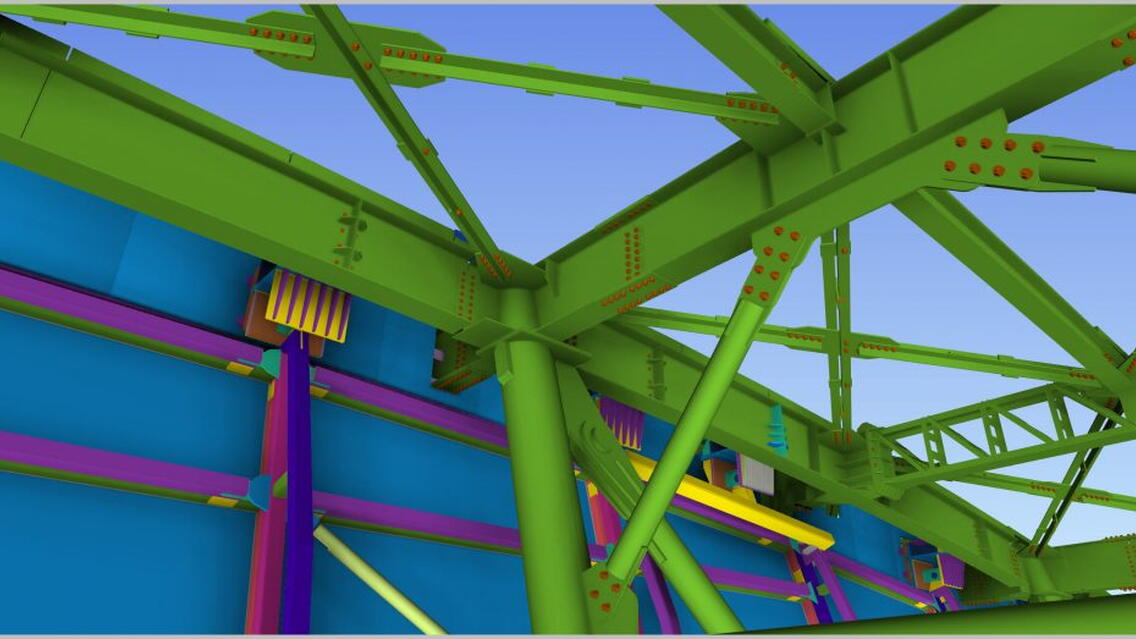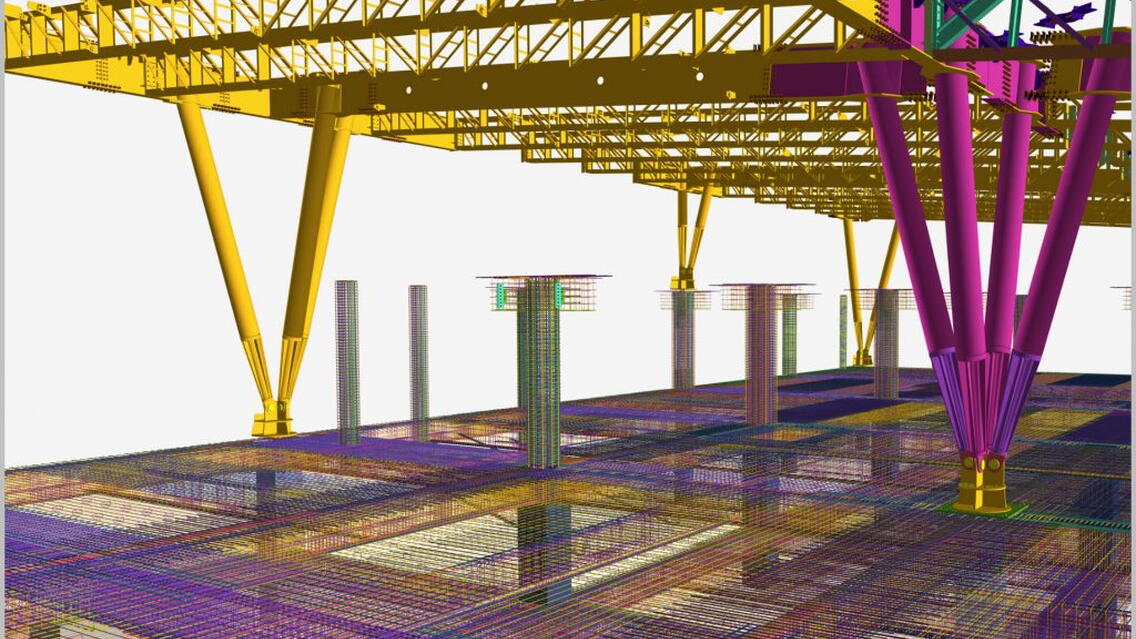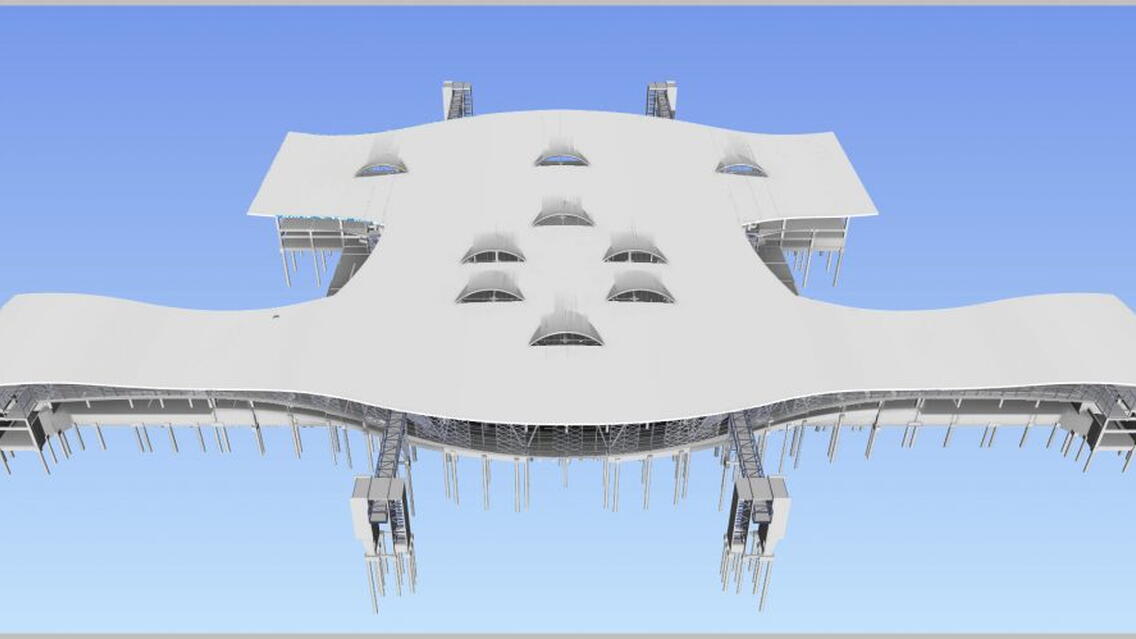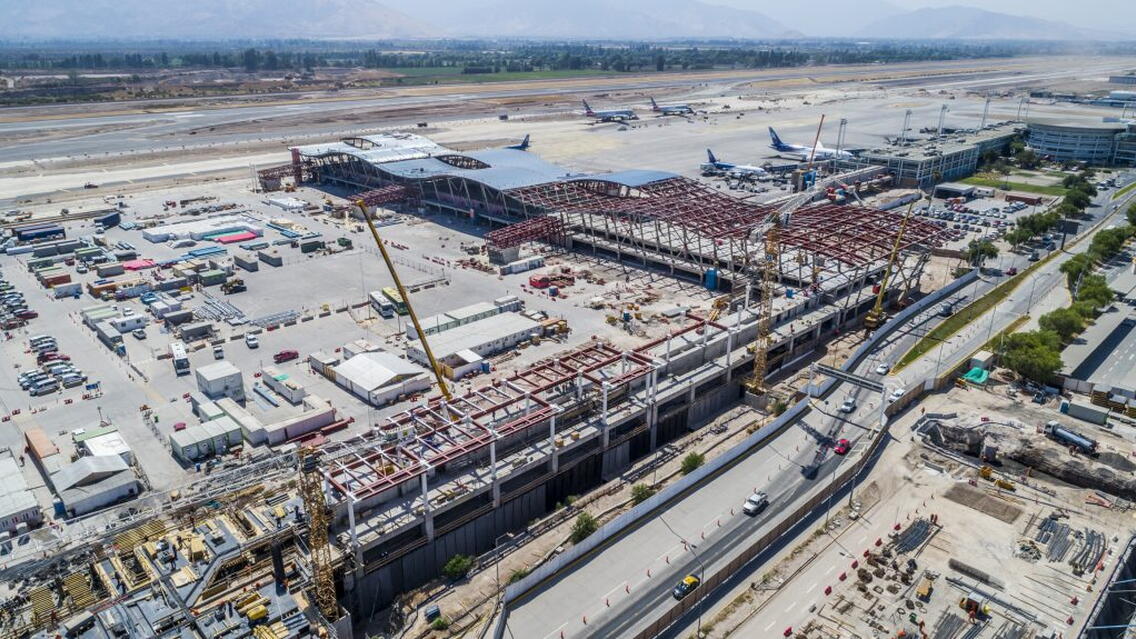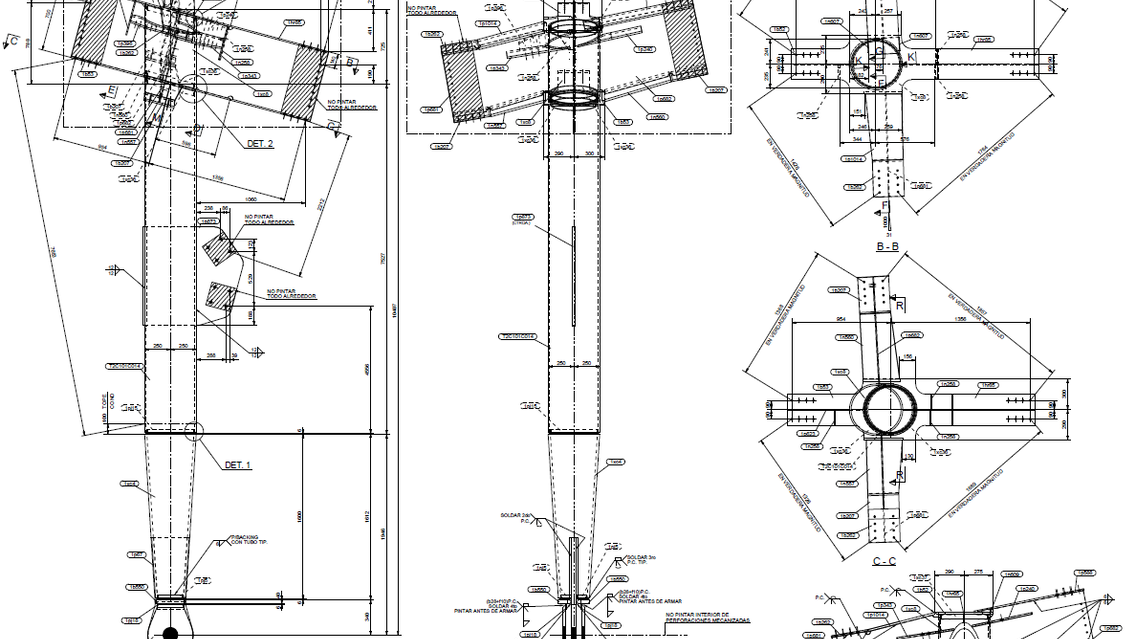Project description
VINCI Construction Grands Projets together with Astaldi oversees the conception and construction of the extension ofthe Santiago de Chile International Airport. The conception phase started in 2015 and the construction phase which started in June 2016 must be completed by the end of 2020. In the EPC contract, BIM has contractual requirements that need to be fulfilled throughout all of the design and construction process. Therefore, the client performs a particular check on the development of the models which are delivered to it every month.
Tekla software has been used during the construction phase by the sub-contractors to develop the design Revit model from LOD 300 up to LOD 400. For the steel structure, the company in charge of the fabrication developed a Tekla model for detailing the connection and the steel parts with direct communication between the model and the CNC machine. Moreover, the Tekla model is connected to the Strumis software to allow a live follow-up of the fabrication status of the steel elements. Both the façade and roof sub-contractor developed their Tekla model through to fabrication detail for accurate coordination and production of fabrication and installation drawings.
Special challenges
The Santiago International Airport project is designed following strong seismic rules, so it has a been a tough challenge to optimize the structure with this requirement. Therefore, it was necessary to have a BIM tool such as Tekla to create models with a very high level of detail and complex connection.
According to all the trades involved in the construction phase, all the interfaces had to be properly identified and coordinated to ensure an efficient and clash-free construction process. Thanks to the very detailed model that we were able to develop with Tekla and the use of coordination tools such as Tekla BIMsight, we managed to secure the coordination workflow.
What made the project successful
During the construction phase, all the sub-contractors have developed their design using BIM models with a very high level of detail. Thanks to the flexibility and the interoperability of the BIM authoring tools that were used, we have been able to integrate, share and coordinate models with a very high level of detail. They have also been used as a communication support to showcase and validate the construction process with the various stakeholders including the client.
The level of parametrical information integrated inside the models enabled the generation of quantities out of the model to validate the budget. Also, having the fabrication drawings directly generated from the Tekla models made it possible to control and improve the quality of the production and safety inside the manufacture.
